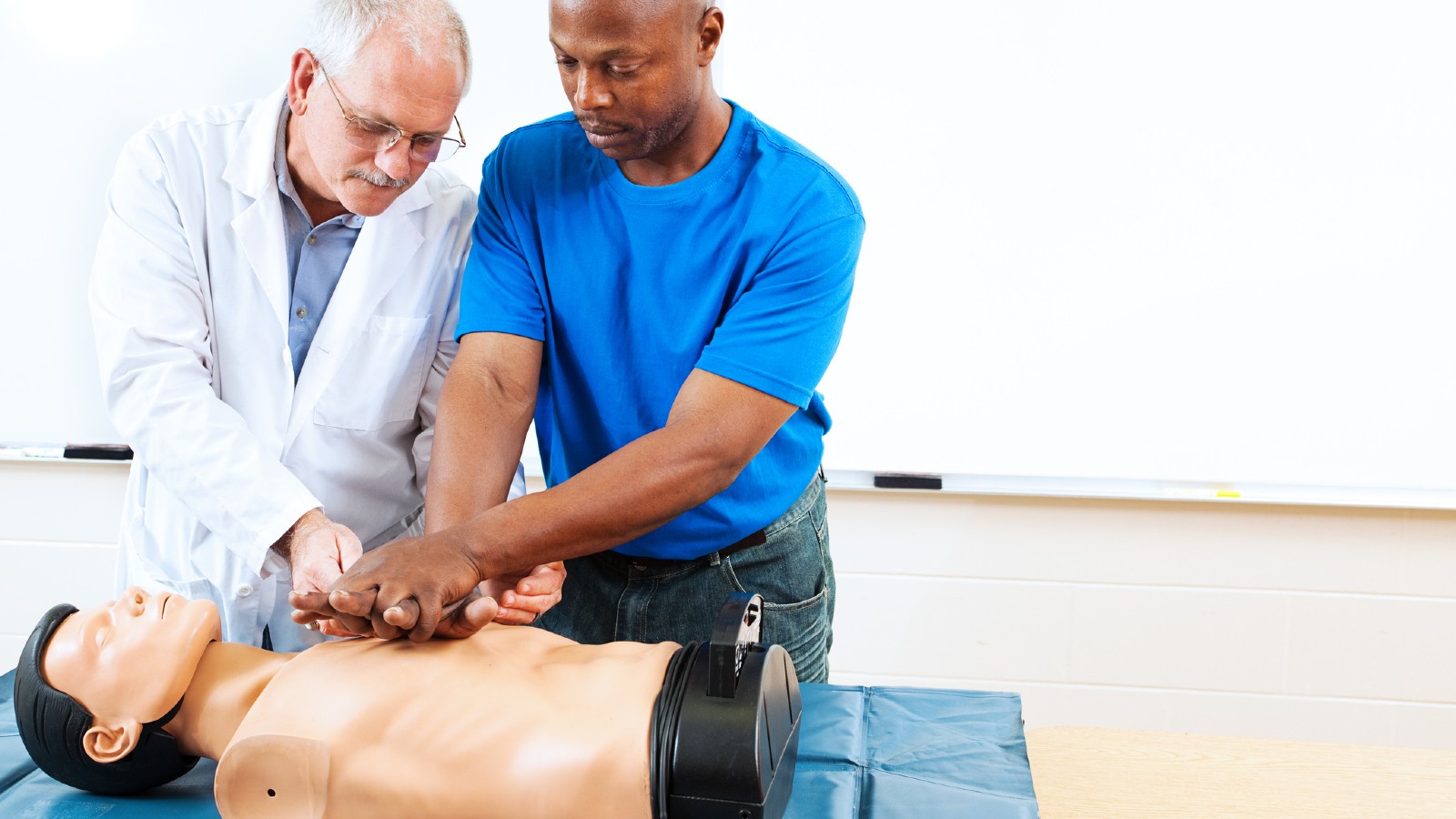
This is Aubrey....
Aubrey works for Elev8 Fitness Club and his responsibilities as a personal trainer include, amongst other things, paying attention to people’s injuries or health concerns. Elev8 Fitness club requires mandatory first-aid training of all employees who work with club members. Aubrey undertook a first aid class to become Senior First Aid and CPR certified. Being able to follow procedures, perform CPR and administer first aid in case of emergencies is an important part of his role.
Can you briefly describe the application of first aid procedures to a couple of emergency situations?
Sprains and strains are common in fitness. A sprain is where a ligament has been twisted or torn. A strain is where a muscle has been overstretched. First aid for this type of injury follows the RICE method which is; rest the patient and the injured part. Apply an ice pack or cold pack on and off for the recommended period. Apply comfortable support such as a compression bandage firmly to extend well beyond the injury and elevate the injured part.
The other common emergency is respiratory distress or asthma. I help the client to sit down in a comfortable position and reassure them. It’s a scary situation to be in. If it’s just shortness of breath, I ask them to sit, breath normally, calm them and offer water. I observe them and call an ambulance if they continue to have difficulty taking full breaths. If it is an asthma attack, the client usually has their own action plan. If they can use an inhaler, then I allow them to do that. If they can’t then I do it for them. It's fairly straight forward, shake the inhaler, give one puff, ask them to take four breaths, repeat until four puffs have been administered. If there is no improvement in 4 mins, then I call an ambulance.
What is the acronym DRSABCD?
D stands for dangers to yourself or others. R stands for the response of the patient. S is send for help. A is for managing airways. B is check for breathing. C is for performing CPR and mouth to mouth. D is for defibrillation.
How would you perform CPR on an adult and on an infant?
To carry out chest compressions, place the patient on their back and kneel beside them. Place the heel of your hand on the lower half of the breastbone, in the center of the person's chest. Position yourself above the patient's chest. Place your other hand on top and interlock your fingers. If performing compressions on an infant of less than one year of age, use the two-finger method.
Using your body weight and keeping your arms straight, press straight down on their chest by one-third of the chest depth. That's more than 5cm in adults, but only 5cm in children and 4cm in infants approximately. Release the pressure. Pressing down and releasing in one compression, aim for 100-120 compressions per minute if only undertaking chest compressions. If conducting CPR and mouth to mouth, then chest compressions will take priority, perform 30 compressions followed by two breaths. This is known as the 30:2 rule. Aim for five sets of the 30:2 rule in about two minutes. Ideally you will have someone else perform mouth to mouth while you perform CPR.
How would you perform mouth to mouth?
To carry out mouth-to-mouth, open the person’s airways by placing one hand on the forehead or top of the head and your other hand under the chin to tilt the head back. Don’t tilt the head back if the patient is an infant or you suspect neck injuries. Pinch the soft part of the nose closed with your index finger and thumb. Using your other hand, open the person’s mouth with your thumb and fingers. Take a breath and place your lips over the patient's mouth, ensuring a good seal. Blow steadily into their mouth for about 1 second, watching for the chest to rise. Take another breath and repeat. Maintain the head tilt and chin lift position and watch for the rise and fall of the chest and listen or feel for signs of air being expelled from nose or mouth.
